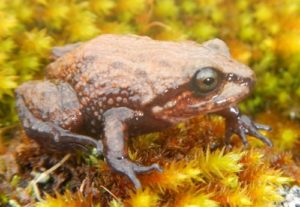Three new species of toads—the Dixie Valley toad, Railroad Valley toad and Hot Creek toad—have been found in Nevadas Great Basin in the US. The toad species were found during an extensive survey of 190,000 square miles of ancient lake bottom.
Toad refers to a common name for certain frogs characterized by short legs, leathery skin, and large bumps covering the parotoid glands. In popular culture, toads are associated with drier skin and more terrestrial habitats than frogs.
It is not very common to discover new amphibian species in the US. Since 1985, only three new frog species have been found. Last time, a new species of toad was discovered in 1968. It was found north of Mexico and was Wyoming toad that has now gone extinct.

According to researchers, the new toad species found are not connected geographically and may be at risk of extinction.
“Weve found the toads in small, wet habitats surrounded by high-desert completely cut off from other populations,” said Dick Tracy, professor at University of Nevada in the US.
“These are absolutely new, true species that have been separated from other populations for 650,000 years,” said Tracy.
The toads were discovered during Tracy’s 10-year long survey of the desert-dominated Great Basin. This area one of the most arid regions in America and just one per cent of the landscape contains water. It is also believed that this region was once covered by large marshes and giant inland lakes during the Pleistocene Epoch.
The team used 30 “shape” metrics and DNA studies to analyze characteristics of these toads to determine if they were different from the closely related Western toad, found throughout Western US.
The details of these new species have been published in the journal Zootaxa.


